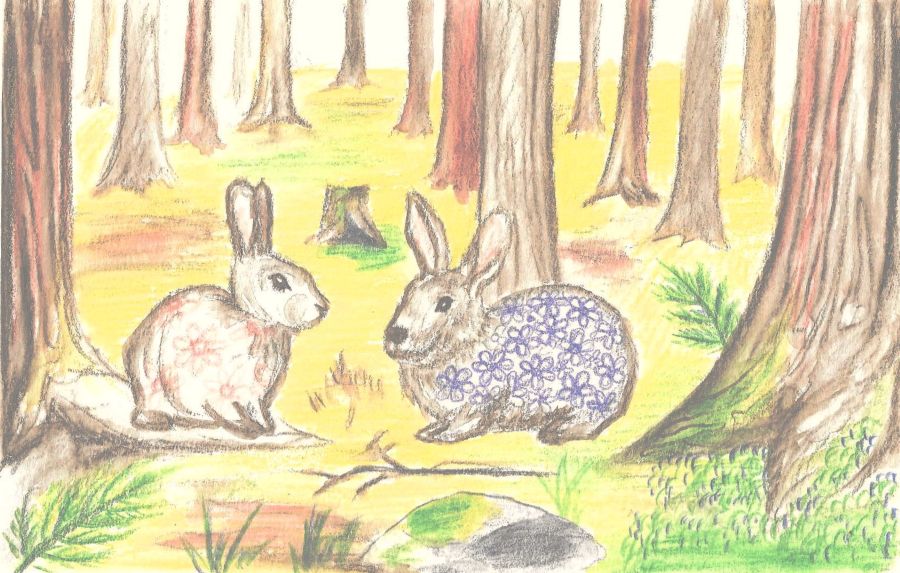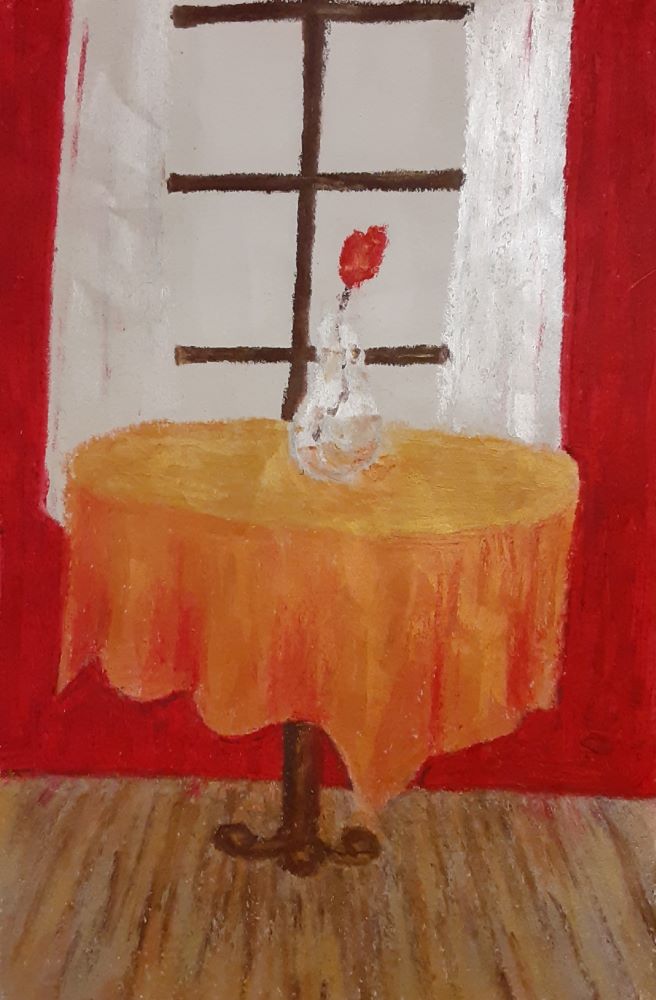Most people appreciate the coming of spring. Warm breezes, budding trees, and pops of color in the landscape unite us in giddy merriment, and people gift each other bouquets of fresh blooms to bring the outside beauty indoors. It is hard to imagine that that anyone looking at a daffodil could have any reaction other than delight. But as much as nature unites us through these common effects, there is always room for deeply different individual experiences. You may look over at a friend as you walk along together on a spring morning, expecting to share a smile of mutual contentment, only to see in their eyes that they are worlds away. In Two April Mornings, Wordsworth explores such a moment and delves into the connection between visual stimulus and memory, and how repetitions in nature connect us to other people and our past selves.
The poem begins in a peaceful, luminous moment, as two friends walk along and the bright red sun rises. The sun’s appearance, though, provokes an unexpected reaction in Matthew: he stops walking, surveys the scene, and says, “The Will of God be done!”. Both the reader and the narrator are left wondering what Matthew is reacting to. Immediately apparent is the distinction between “We,” “Matthew”, and “I”, each experiencing the events of the poem differently. The two friends had set out “merrily to pass a day among the hills,” to talk and relax in nature. However, the sight of the sun on the hills severs that communal “we” experience and Matthew’s inward, individual thoughts are brought to the foreground. The narrator at this point is still in the traveling merriment and preoccupied with beauty. He cannot at all understand what Matthew feels and must ask him, “from thy breast what thought, / Beneath so beautiful a sun, / so sad a sigh has brought?” The visual environment around them is having profoundly different effects on these two people, instead of joining them as it did before.
The cause of this difference is revealed in the sixth and seventh stanzas to be Matthew’s past experience, and how closely his memory of it aligns with the present moment. This mental prompting is very specific. It is not that Matthew by chance happened to recollect something from his past. Instead, a single cloud, and a certain hue brought back memories all in a rush of feeling, which caused him to be transported to a different April morning:
Yon cloud with that long purple cleft
Brings fresh into my mind
A day like this that I have left
Full thirty years behind.
And on that slope of springing corn
The self-same crimson hue
Fell from the sky that April morn
The same which I now view!
As the narrator looks at this scene for the first time, Matthew looks at it and sees a different moment from the past and is almost incapable of separating the two experiences. He is in a sense reliving that moment as he gazes at the sunlit hill.
This transportation in memory is multilayered. First, the crimson hue takes Matthew back to a day thirty years ago, the original April morning when he is out walking. On that day he walks by the churchyard and sees his daughter’s grave, where he stops and contemplates his daughter’s life. At the graveside, Matthew is split between the past memory of his daughter being alive, and the way that she is still present to him in his love for her:
Six feet in earth my Emma lay,
And yet I lov’d her more,
For so it seem’d, than till that day
I e’er had lov’d before.
This is Matthew’s reflection within his reflection, another layering of his past self with an even more distant memory. This one is slightly different from the first, though, in the type of visual stimulus responsible for the transportation in memory. In the first, the color of the cloud brought Matthew back to a time when he was seeing that very color. But his second reflection is prompted by the sight of Emma’s grave, which is more of a symbol of her than a direct image.
It is very common in Wordsworth’s poems for a character to encounter a symbolic object in nature that moves them to introspection. The world is laden with meaning for anyone willing to see metaphor in it. In the Intimations ode, Wordsworth focuses on a pansy and uses it as launchpad into reflection. The poet opens himself up to nature, and nature delivers a fresh insight or experience. In this poem however, it is nature directly repeating itself with shocking similarity that provokes not only reflections on life gone by, but a transportation back to a single moment. When seen for the first time, the purple streaked cloud is a marvel, a striking image–when seen replicated decades later, it is an apparition, an eerie resurrection of a long-forgotten moment and the inner turmoil that it contained.
At the end of the poem it is revealed that in the narrator’s present, Matthew is himself deceased, and the entire poem is a memory. This final memory is not connected directly to nature. But it seeks to encapsulate Matthew’s character as seen in the moment that he shared with the narrator, where he revealed himself through an image of his past, and his reflection on that moment. In the beginning of the poem the narrator lived in the merriment of the external world. But at the end he turns inward towards memory, and now himself has a vivid connection between a lost friend and a moment that they shared. He very well might be the one to stop, to look, and to exclaim when he next sees that crimson hue falling from the sky.
As we live, the world becomes a storehouse for pieces of ourselves. Perhaps walking along a certain path reminds you of the interesting conversation you had when last there, or there is a tree whose branches your eyes have traced during many contemplative moments. Sometimes we can access these memories ourselves, alone in a dark room, but other times they can only be unlocked by being in that place, seeing or sensing whatever it was that got tangled up and stored with the initial memory. As you walk along that familiar path you encounter yourself again and again.


Leave a Reply